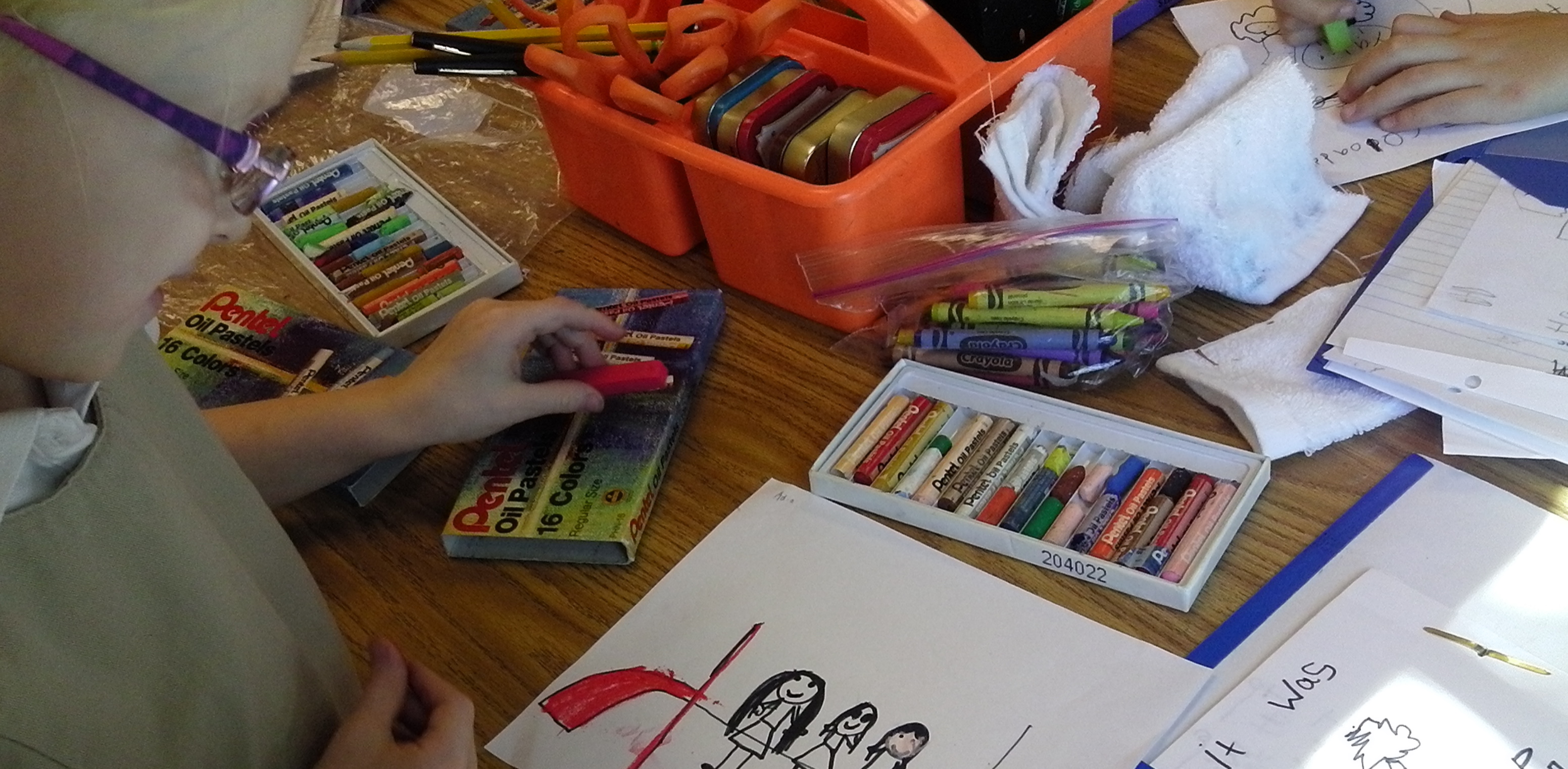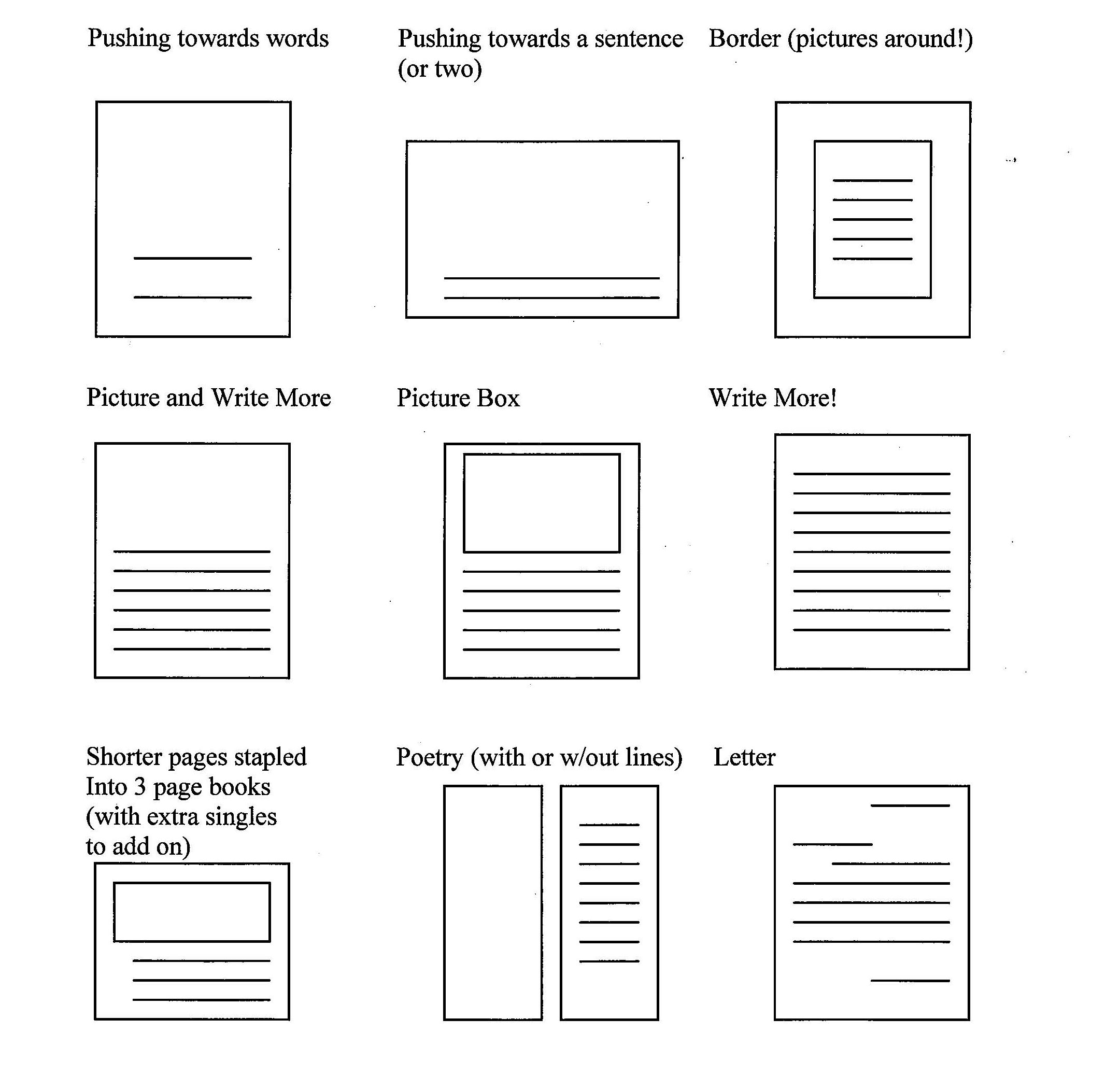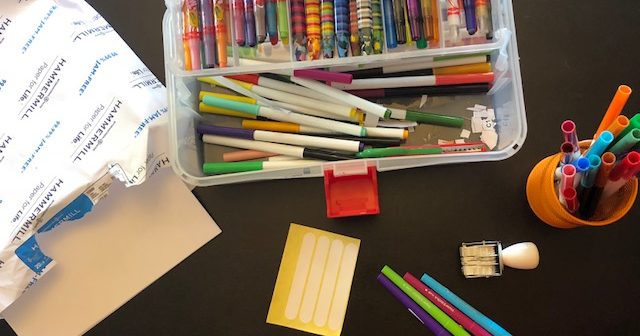
by Libby Duggan
The right supplies can help you launch a writing workshop and establish the kind of habits and practices that will make the workshop easy to manage all year long. You may even want to stock up before the back-to-school sales end. Here are the “must-have” supplies I used in my primary grade workshop:
Writing workshop teachers prefer that students use pens instead of pencils, because ink cannot be erased. This allows us to see all of the work and thinking that students have done. We know we can learn a lot about how to teach a child by studying his/her mistakes, so we want the errors to be visible. You might want to try using different colored pens at different stages of the writing process—black ink for drafting and blue ink for revisions, for example. I found that the type of pen matters as well. Felt tip pens work best for young children who are still developing fine motor control. The felt tips grab the page more firmly, allowing children more control than a ballpoint or roller ball pen that slides too easily across the page.
In Kindergarten, at least in the first semester, children should be given blank books comprised of 4-5 sheets of 8.5 x 11 inch paper stapled together. Unlined paper helps beginning writers concentrate on composing with images and getting the shapes of the letters written well. As writers develop, you can introduce a wider variety of paper options. Once I see a student writing a lot of text and using small letters, for example, I introduce lined paper, giving that student—not the whole class—a book with a blank cover page and inside pages that have boxes for pictures and lines for text.
I avoid staplers and single sheets of paper until 1st grade, or even second semester of 1st grade. By then, different genres or stages of writing can necessitate different papers, too—tall and skinny paper is perfect for poetry, for example, and scrapbook paper can be used to “fancy up” final publications. A wide range of paper choices is exciting and less intimidating for students than a one-size-fits-all standard. I still love these thumbnail images that Partnership coach Mary Roderique shared at a Summer Institute many years ago (Click here for the full handout):

Students in primary grades are not working in notebooks yet, but they are writing a lot of “stuff.” This is why it is important that they have a folder where their writing can be stored. My students kept their writing folders in the classroom at all times, so none of their ideas or projects got lost. Periodically, usually when starting a new unit of study, my students cleaned out their folders to make room for new projects. We moved old projects to clear gallon storage bags that I also kept in the classroom until the end of the year. This way, we could pull out old projects for short revision studies. Students took all projects home at the end of the school year.
Students in my classroom dated their work every day (or dated each new piece of paper). This helped me track and assess students’ progress. Instead of asking students to hand write the date on each page, you may want to have self-inking date stampers around the classroom. Students like using these, so they are more likely to remember to date their work.
Even though you provide a variety of paper options, there will be times when students need just a little more space to write what they want to say. You can show them how to add a small strip or flap along an edge of the paper to make it larger. There will also be times when young writers realize the words they first put in a book aren’t working any more. You can use scissors, tape, and scrap paper to replace text and make changes just like you use the “cut and paste” functions in word processing software. Correction tape can also be used in the final stages of editing and making projects ready for publication. Just be sure to keep the correction tape hidden until days before final publication and celebration. You don’t want students to cover up their thinking in the early stages of writing and drafting.

Some writers work best at a desk while others need to sprawl out on the floor. It’s a good idea to have clipboards on hand for students to use when spreading out around the classroom. This allows them to have a hard desk-like surface to work on, even if they need to get up and move to an area with less distractions.
Illustrations that students make are as important as the words they write. Often the pictures in a text enhance or even add meaning to the words on the page. By providing students with markers, crayons, watercolor paints, collage paper, etc, we help them recognize and develop the significance of their own illustrations.
Last but certainly not least, young writers need access to texts that are like what they will be asked to write. In a primary grade How-To unit of study, for example, we can expose students to recipes, directions for board games and instructions for crafts that often come in children’s magazines. In time you’ll see the world as a teacher of writing, noticing what you can teach from texts that you encounter while lounging on vacation, shopping for birthday cards or reading the Sunday paper on the back porch. Start growing your collection of resources now, adding to it every chance you get.
This post was originally published in August 2012 and updated August 2018.
 Libby Duggan is program manager for the Partnership for Inquiry Learning. A former Fulbright Scholar and graduate of Indiana University, Libby has taught in a variety of primary grade classrooms—on the Navajo Indian Reservation, in the United Kingdom, in Indianapolis Public Schools, and at Christel House Academy.
Libby Duggan is program manager for the Partnership for Inquiry Learning. A former Fulbright Scholar and graduate of Indiana University, Libby has taught in a variety of primary grade classrooms—on the Navajo Indian Reservation, in the United Kingdom, in Indianapolis Public Schools, and at Christel House Academy.
See what visiting scholar Matt Glover taught preschool writers during a visit with us.
